Jason Blum - uber-producer, Blumhouse guru, skiing enthusiast - attended Sundance this year, but he didn't get in on the buying spree. Why would he? He already has a Happy Death Day sequel to hype, Halloween sequel to get off the ground, Dark Universe to reboot, and a pretty sweet distribution deal with Universal to fall back on.
No, he was in Sundance for the world premieres of David Oyelowo's Relive and Kiersey Clemons' Sweetheart, both of them produced through Blumhouse. Why worry about buying something at Sundance when you already have over films like that and 20 others either in development or completed and dated on the release calendar? If there's a top of the indie world mountain, Blum free soloed it years ago and is just showing off now.
It was a very different story 20 years ago. Back then, Jason Blum took part in one of the most notorious overspends in Sundance Film Festival history. It almost ruined his career; in the long run, it might have actually saved it.
This is the story of Happy, Texas, a film few have ever actually seen but many know for its notoriety as one of the biggest Sundance busts of all time. Purchased for a possibly record$10 million, it would eventually gross less than $2m. Meanwhile, another movie at that year's Sundance - one which Blum and just about everyone else in Hollywood could have had - went on to become one of the most successful independent films of all time.
Correction: This is the story of Happy, Texas vs. The Blair Witch Project.
So, that Happy, Texas premise - escaped prisoners pretend to be gay, one of them quite flamboyantly, while hiding out in a small town - hasn't aged well. Clearly. But this is early 1999 we're talking about. The world was only five years into the Clinton administration's "Don't ask, don't tell" policy. Gay panic humor was everywhere. Heck, it seemed to pop every other week on Friends. Elsewhere on that same network, Will & Grace and its normalizing of a more positive (though also very broad) representation had just premiered five months earlier.
Times, eh, were different. Back then, Miramax head honcho Harvey Weinstein was a worse-than-average Hollywood bully, a walking caricature of a film producer who seemed to spend all of his time yelling into phones and attending awards shows; now, we know he was always a monster.
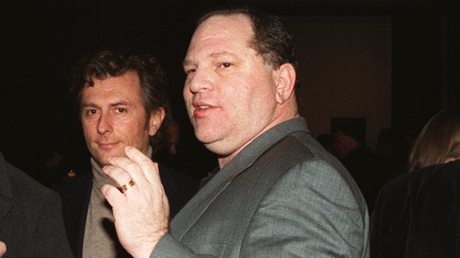
To Jason Blum in 1999, Harvey was just his boss. A year earlier, Blum had been named Miramax's co-president of acquisitions. By his own admission, he was underqualified for the job. He'd produced an independent film with old roommate/aspiring director Noah Baumbach straight out of college, and then leveraged an endorsement from family friend Steve Martin into landing a gig as the vice president of acquisitions for independent studio Arrow Films in New York.
After that, he wasn't even out of his 20s yet and somehow still landed at Miramax, where he earned a six-figure salary in exchange for making his bosses - Harvey and his brother Bob - happy. That meant going out and buying the perfect films at festivals, especially Sundance. In 1999, his bosses wanted Happy, Texas.
They weren't alone.
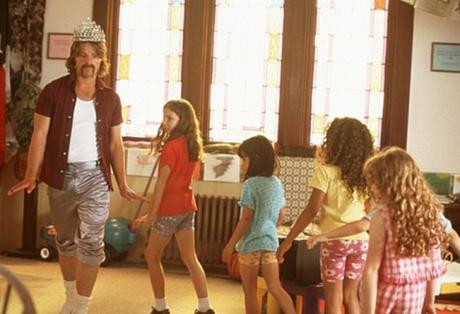
Fox Searchlight, New Line Cinema, Paramount Classics, and Summit Entertainment all reportedly got sucked into an intense bidding war with Miramax over Happy, Texas. The victor seemed preordained since if the words "bidding war" and "Miramax" ended up in the same sentence it usually had one conclusion: Harvey happy, the competition shaking their heads, and third-party observers wondering how any of these huge sums of money made any real business sense.
The same exact thing had happened a year earlier. At Sundance 1998. Harvey wanted The Castle, an Australian comedy about a working-class family fighting against a government effort to forcefully buy their land to make room for an airport expansion project. He saw the potential for a Fully Monty-style hit, Fox Searchlight's 1997 Best Picture nominee which grossed over $250 million worldwide.
By the time The Castle premiered at Sundance, it had already grossed $8 million in ticket sales and become a bestseller on home video in Australia. Paramount saw that and snatched up distribution rights for Britain and South Africa. The bidding at Sundance was over who got to release the film everywhere else in the world. Miramax ponied up $6 million to beat out PolyGram and Artisan Entertainment (then named LIVE Entertainment).
Today, if anyone remembers The Castle it's likely because it was the film debut of future Bruce Banner as well as Star Trek villain Eric Bana, albeit in a minor role. However, in 1999 The Castle was an albatross hanging around Miramax's neck. They spent all of that money to acquire the dang thing, yet by the time the next Sundance rolled around they had yet to put the movie in theaters. It was embarrassing, and it resulted in a lot of posturing over Happy, Texas which not everyone in Hollywood totally bought.
They couldn't very well commit a then-record amount of money to buy Happy, Texas before they'd even released the last Sundance movie they splurged on. Well, they literally could because that's exactly what they did, but they didn't want Hollywood to see things that way. So, the official line was this:
Pay no attention to all those headlines about Happy, Texas tying or possibly beating The Spitfire Grill 's record for biggest ever Sundance acquisition. We didn't promise them $10 million. No, no. Actually, we've only committed $2.5 million. The rest depends on how many tickets the film sells and awards it wins.
"I know for a fact that [ Happy, Texas] was sold for north of $10 million," fired back Tony Safford, senior VP acquisitions, 20th Century Fox, in a Variety article. "But I believe Miramax must feel that such a high acquisition cost does not ultimately benefit the perception of the movie."
"As the entire industry knows, Tony is a disgruntled ex-Miramax employee with an ax to grind," taunted Miramax L.A. president Mark Gill. "I was in the room for the full 12 hours of negotiations, and not once did I see or hear Tony Safford. Clearly, the man has a tremendous gift for imagination and spite."
"We created a back-end structure to the deal so that if the movie succeeds in theaters, the filmmakers will do very well," said a young, seemingly anonymous Miramax senior VP named Jason Blum.
Meanwhile, as all of that drama played out behind closed doors and in the press, The Blair Witch Project sold for $1.1 million to the newly christened Artisan Entertainment, the very same company which lost the Castle bidding war to Miramax. "[ Blair Witch] producers of the original found-footage horror movie plastered fake 'missing person' posters, with the faces of some of the film's cast, all over the festival," THR recalls. "The stunt certainly helped generate attention." Yet not enough attention to land for big money at Miramax.
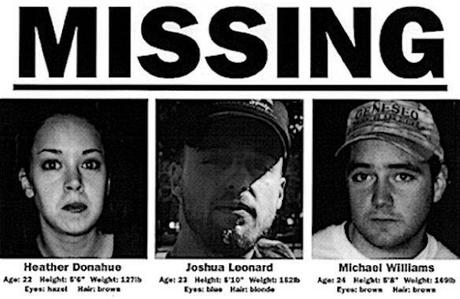
Looking back on it now, Blum at least takes comfort, "What was formative about the experience is that people who were older than I was and who knew more than I did also passed on this movie."
Indeed. Legendary independent film executive Bingham Ray had walked out of his screening of Blair Witch, dubbing it a "piece of shit." After Artisan bought it, he doubled down, quipping, "The only thing scary about The Blair Witch Project is how much Artisan paid for it."
The rest of Hollywood clearly felt the same way. As Blum explained in a Geek's Guide to the Galaxy interview, "Before Sundance, a videotape of The Blair Witch Project went to a lot of the buyers. I passed; a bunch of people passed. The worst crime was that once it screened at the festival, we still all passed and when it was bought at Sundance it was one of the smaller deals of the festival."
Smash cut to 6 months later.
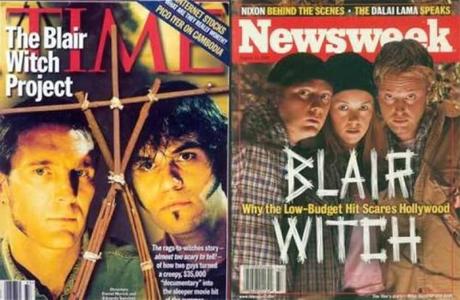
"We were in Harvey's office the Monday after Blair Witch had made a load of money, and Time magazine, with the film on the cover, was in his inbox," recalls Kevin Smith, who was trying to set up Jay and Silent Bob Strikes Back at the time. "I pointed to it and said, 'What happened?' He was like, 'I have no idea. He was really pissed off that it wasn't his. And pissed off that somebody could do a Miramax and not be Miramax."
It was Jason Blum's job to make sure that didn't happen. He was one of the lead negotiators on Happy, Texas, and he passed on Blair Witch two different times. Weinstein's legendary verbal bullying reigned down hard on him after that, no doubt. Blum characterizes it more gently today, simply saying, "I watched [ Blair Witch] marching towards success and was reminded by my bosses what a dope I was."
A year later, Blum left Miramax to become an independent producer for his newly-created Blumhouse Productions. He flailed about in the wilderness a bit before eventually betting everything on another DIY indie horror movie which circulated around Hollywood as a DVD and could have been had for little more than a song. It was called Paranormal Activity. I'm guessing you've heard of it.
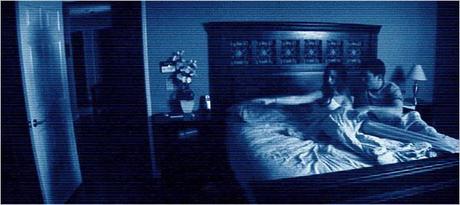
Blum had been down that road before. Last time, somebody else got to be the genius who saw the Blair Witch Project phenomenon coming. He wasn't about to let somebody do the same with Paranormal Activity. So, he attached his name to it, fought idiot studio suits who wanted to reshoot the whole thing with name actors and better special effects, and stuck with it for years until Paramount finally put it in theaters in 2009.
When I first saw Paranormal Activity, I had gotten it in the context that it was going straight to DVD and that it wasn't going to be distributed; then I watched it with an audience to check myself and saw how the audience responded and said, to the filmmaker, "I think there is an audience for this movie and I think it could work in a movie theater." And even though everyone said "no," everyone said no to Blair Witch and look what happened to that. That gave me the strength and conviction to hang on when everyone kept saying I was a dope.
The result was easily the biggest hit in Blumhouse's decade of existence to that point and the beginning of a highly lucrative franchise. When Paramount later and quite stupidly let Blum walk, he found a home at Universal. Now, he's Hollywood's great disruptor. If not for overspending on Happy, Texas and ignoring Blair Witch Project, maybe he doesn't do that.
The lesson? A lot of these movies people just bought at Sundance are going to be financial disappointments. Some of them might even bomb so hard to be considered career-enders or company-destroyers. However, you can learn from that and come out better off. For Jason Blum, that meant spending a decade in the wilderness and pouncing when a second chance came calling. Hopefully, the penance period isn't nearly as long for any of this year's overspenders.
Who knows? The market is so different now that it was in 1999 or even 2009. Back then, you certainly didn't have anyone as deep-pocketed as Amazon around. Maybe this will all play out differently this time. While we wait to found out, Jason Blum has another movie or TV show to make or promote or both. It's what he does.
Sources: Variety, The LA Times, Down and Dirty Pictures: Miramax, Sundance, and the Rise of Independent Film, Jason Blum's interviews on The Bill Simmons Podcast and Geek's Guide to the Galaxy
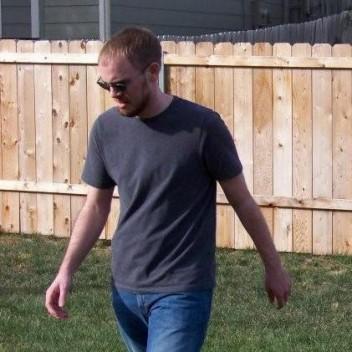
Grew up obsessing over movies and TV shows. Worked in a video store. Minored in film at college because my college didn't offer a film major. Worked in academia for a while. Have been freelance writing and running this blog since 2013. View all posts by Kelly Konda

